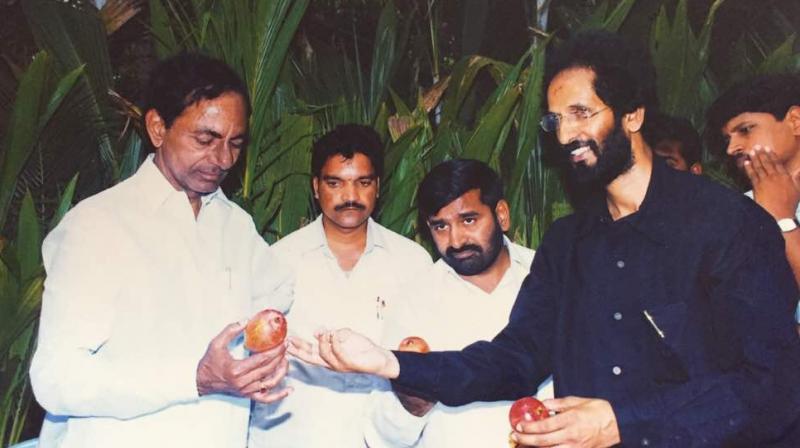Telangana: Nizam-era mangoes lose taste to new-age crops
The TS horticulture department and Biodiversity Board have failed to promote Nizam-era mango varieties.

Hyderabad: The TS horticulture department and Biodiversity Board have failed to promote Nizam-era mango varieties, leading to a decline of mango agro-biodiversity in the state. For research, though, the germplasm of more than 470 mango cultivars including those of the Nizam era like Azam-Us/samar, Jahangeer, Shakkar Guthli are preserved. Their commercial cultivation has come down to three or four varieties.
Officials say there is a decline in the mango orchard area with farmers moving to other horticulture crops. Mr P. Someshwar Rao, the Sangareddy district horticulture and sericulture cluster level officer, said Benishan (Banaganapalli) and Totapuri (Collector) were the only two major varieties that were being grown in the state on a commercial basis.
“Farmers are moving to ginger and potato in Sangareddy and Zaheer-abad areas by converting mango orchards. There is a decline in growth of mango productivity year on year as farmers are not interested due to the income being less. For the sake of research, there are several varieties. Benishan occupies 80 to 90 per cent of the area in the state,” he said.
Mr I.C. Mohan of Ganga Nursery in Sangareddy, said, “Azam-Us/Samar has teh highest preservation quality. Usually, the ripe mangos after being cut from the tree will be fresh for four days to a week. Azam-Us/Samar will be fresh for 15 to 20 days. This variety also is available till late in July.”
Jahangeer is the sweetest variety of all mangoes. Shakkar Guthli is the smallest, weighing just 25 grams. Nazook Badan, is an old delicate variety. Begum Pasand, Nawab Pasand, Noorjahan, Samre Bhaise are some of the varieties which are now not seen in cultivation. “We at the nurseries educate some of the mango orchard owners and farmers and have to force them to grow,” Mr Mohan said.
Mahmood Vikarabad and Himayat Pasand are some of the old varieties which are seen in commercial cultivation to some extent. Experts suggest that government has to set up processing industries which will help to improve exports to Eur-ope and the Middle East. Mr Mohan said, “The government and the horticulture department need to educate farmers and orchard owners and consumers on these Nizam-time cultivars. There is a need to set up mango processing centres. This will help in increase the mango cultivation area.”
He said Manjeera was a hybrid of Rumani and Neelum, which is also cultivated to some extent. After the year 2000, there are only few cultivars developed by researchers. Lal Mohan and Sensation, which are reddish and pinkish, were developed recently. Biodiversity experts said there was a need to popularise the old varieties as they add to the agro biodiversity.
National Biodiversity Board member Rajeev Mathew said, “The fruit research station at Sangareddy developed several mango varieties with vegetative grafting. He said a Nizam family member had gifted him a variety that was not seen in the market. “They grow it in their backyard,” he said.
Several Muslims who are farmers and owners of mango orchards also shifted to commercial varieties. A mango farmer, Mr Syed Jaffar, who works in a 15-acre orchard says, “We have Dasheri, Kesari, Himayat, Amrapali, Cherukurasalu, Chinnarasalu and Alphonso trees. We sell them in Hyderabad, Gulbarga, Zaheerabad and Sholapur markets,”

